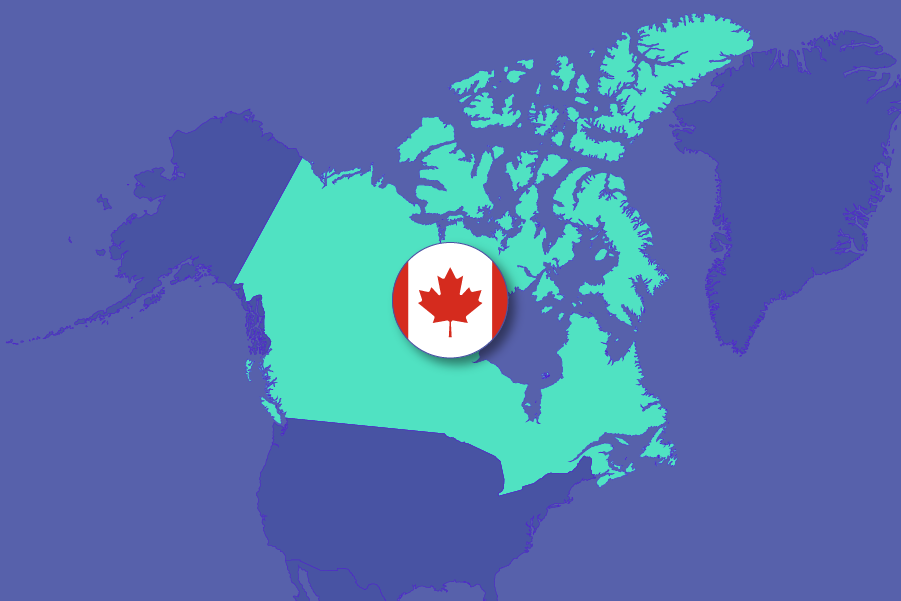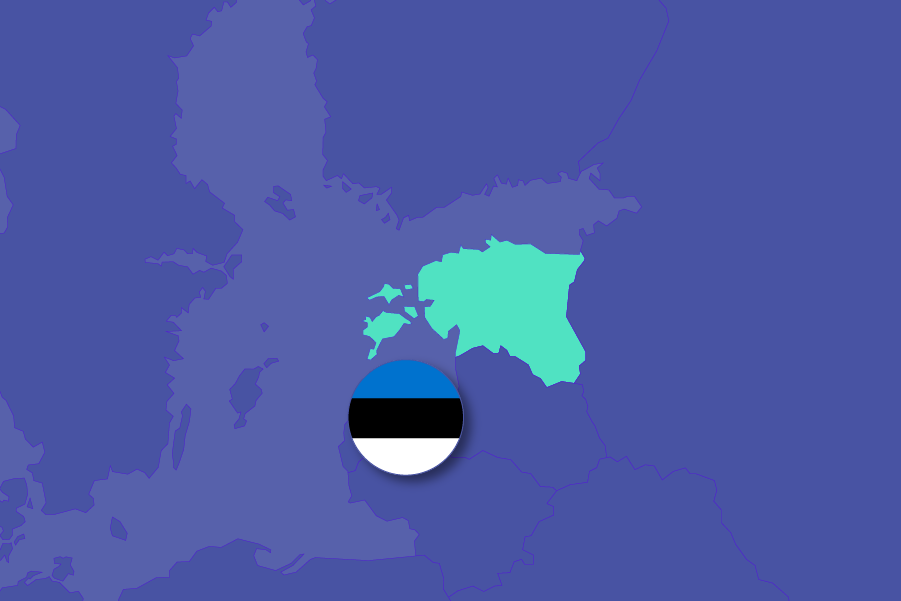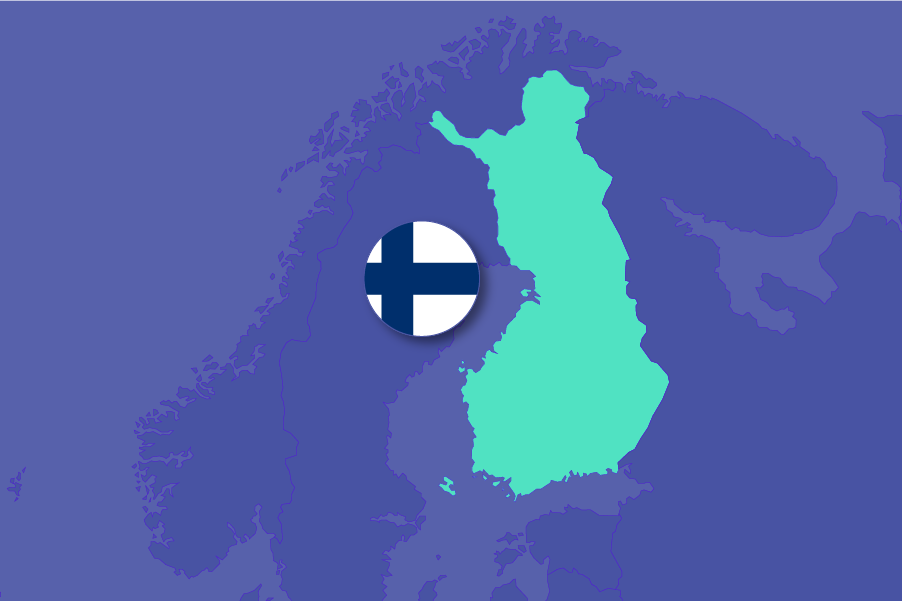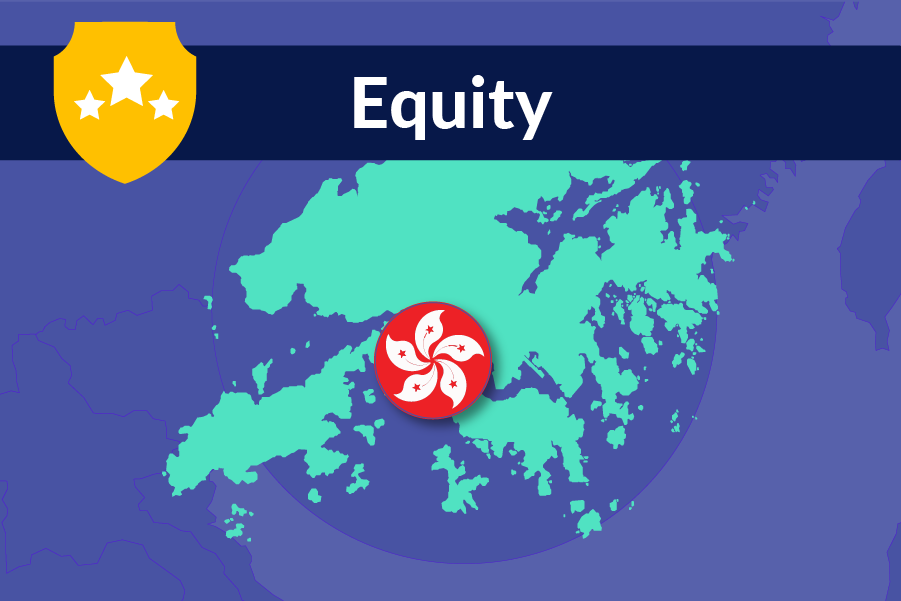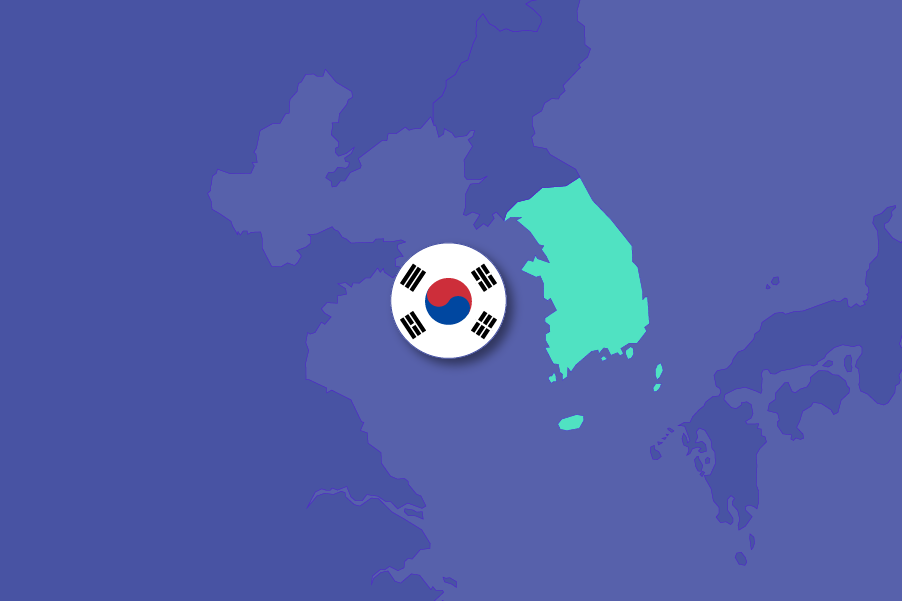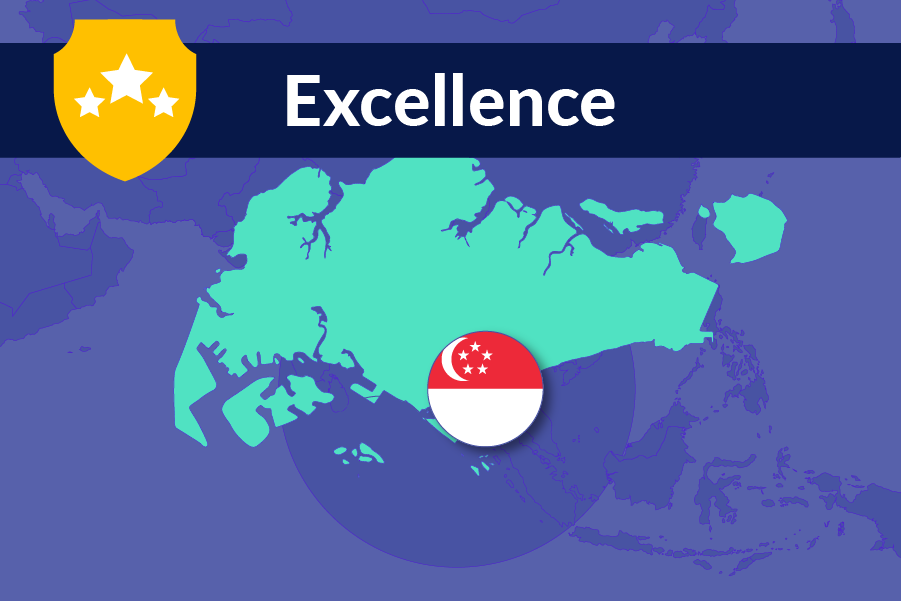Ireland
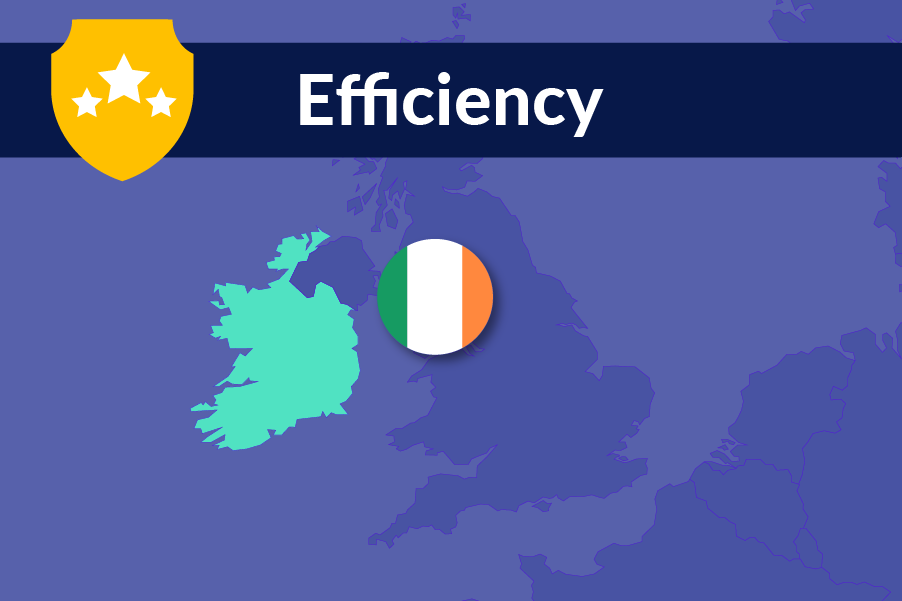
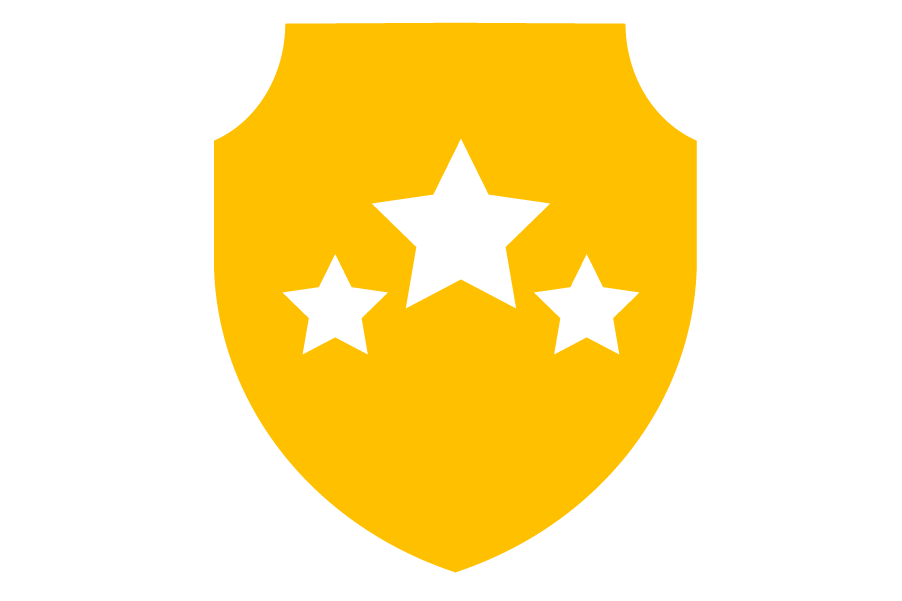
Efficiency
Ireland is notable for spending significantly less per student with better results and for better earning return on years of schooling than many other OECD nations.
Context
Ireland has been a consistently high performer on international assessments for the past decade and has become a global leader in literacy. Only Singapore scored higher than Ireland in reading on the 2022 PISA tests. Ireland is also notable for the equity of its performance across subjects, with significantly less variation in PISA scores related to socioeconomic status (SES) and a high percentage of students from lower SES families scoring at the highest levels. Ireland is also notable for spending significantly less per student with better results and for better earning return on years of schooling than many other OECD nations.
Historically, the Irish people have demonstrated high levels of literacy and a deep respect for education. During the Dark Ages, Irish monks meticulously preserved ancient classical and religious texts. Later, when England forbade the Catholic Church from operating schools in Ireland at the end of the 18th century, the Irish set up secret church schools to preserve Irish education and culture. By the early 20th century, nearly 90 percent of the Irish population was literate. As Ireland gained independence from Britain and faced the task of building itself anew, education emerged as a clear path to economic and social mobility.
Ireland’s journey from poor agrarian nation on Europe’s periphery to one of the continent’s wealthiest members was not without bumps. In the early part of the 20th century, the Irish government enacted protectionist policies that led to economic stagnation and mass emigration. It was not until the 1970s that Ireland joined the European Union and began to implement outward-looking economic policies. By the 1990s, Ireland had become a hub for foreign investment and emerged as a global tech and pharmaceutical hub, earning the nickname the “Celtic Tiger.” While the financial crisis of 2008 halted this progress temporarily, Ireland has recovered, and its economic growth remains high relative to the rest of Europe. The country’s strong economy has also attracted waves of immigrants, who now make up about 12 percent of the population.
Over the past several decades, Ireland has incrementally reformed its schools to fit its changing economy. Reforms have prioritized maintaining a strong teaching force, developing national standards for teacher education, and limiting teacher education programs to a small number of research universities to ensure consistency and quality. The school curriculum has also been updated in recent years to focus on well-being, whole child development, and cross-disciplinary key competencies in primary grades, as well as expanding student choice and pathways options in secondary schools. Across all levels, Ireland is looking at broader indicators of student progress and modernizing ways of measuring them. Ireland has also expanded support for lifelong learning and skills training to accompany its economic development; supports include the creation of a national training fund and the dedication of substantial resources to training workers for needed industry jobs.
Still, challenges lie ahead. Skills gaps persist in the workforce, and participation in vocational education and lifelong learning options remains limited despite government efforts to build a stronger system. Although teaching remains a highly respected and attractive profession in Ireland, limited opportunities for professional learning and collaborative work may hinder ongoing recruitment. Finally, Ireland has only just begun to harness technology, including artificial intelligence (AI), in its schools.
Quick Facts
System Governance
Roles and responsibilities
In Ireland, the Department of Education and Youth oversees primary and secondary education (including secondary vocational education) and works in partnership with the Department of Children, Disability, and Equality to oversee early childhood education, setting curriculum and teacher qualifications for that sector. The Department of Education and Youth sets overall policy for primary and secondary schools, including curriculum, funding, and quality assurance across schools. Key statutory bodies under the Department include Oide, meaning “teacher” in Gaelic, which organizes professional learning for teachers and school leaders; the Education Research Center, which conducts research and develops standardized testing; the National Council for Curriculum and Assessment, which advises on curriculum and assessment; and the State Exams Commission, which develops and administers national post-primary exams. The Teaching Council, which is independent of the Department, provides a professional code of conduct for educators, sets teacher qualification standards, and maintains a register of certified teachers. The Council does not set national pay scales for teachers, which fall under the aegis of the Department.
Regional education offices support schools with funding, teacher payroll, and oversight of programs such as special education services. Schools are managed by boards that develop and update the school’s strategic plan, make hiring decisions and manage some grant funding. Board members are a mix of appointed and elected and include the principal, teachers, parent representatives and designated community members.
The Department of Further Education, Higher Education, Research, Innovation and Science (DFHERIS) oversees higher education (colleges and universities), further education (upskilling, reskilling, and apprenticeships for future and current workers), and research sectors. A DFHERIS sub-agency, SOLAS (the acronym for Further Education and Skills Service in Gaelic), oversees further education and training. A network of 16 education and training boards oversees skills training providers, while an independent agency, Quality and Qualifications Ireland, accredits post-secondary institutions across the country and oversees qualifications awarded to students. The Department recently created a National Skills Council to advise on aligning policy with labor market needs.
Goal setting and planning
Ireland’s incoming coalition and party government typically issues a “programme for government” to outline broad goals for their administration, which can last up to five years. They are generally reviewed annually and do not typically continue into the subsequent administration. The 2025 Programme, Securing Ireland’s Future, includes goals to “position Ireland ahead of emerging economic trends,” “deliver a world-class education system and affordable and high-quality childcare,” and “harness the digital and AI revolution.”
To align with these overarching government strategies, each of Ireland’s agencies develops a two-year plan detailing actions and priorities. The Department of Education and Youth’s 2023-2025 Statement of Strategy is organized around four areas: quality of education, equity, infrastructure, and organizational excellence. The plan focuses on addressing the impact of COVID-19 on schools, particularly through bolstering the physical and psychological well-being of students and better supporting them. It also lays out actions to address issues in the teaching workforce, including strategies to improve recruitment and better support the capacity of current teachers. Expanding the use of digital technology and better serving an expanding population of students with special learning needs are other key priorities. The Department has also developed a digital strategy for 2022-2027, following an initial five-year plan. The strategy focuses on expanding digital tools and training for teachers, as well as holding public forums to gather input and share ideas.
DFHERIS’s Statement of Strategy for 2024-2026 focuses on building skills and talent; promoting research, innovation, and science; supporting inclusion; fostering global engagement; advancing system performance and reform; and strengthening internal capabilities. The Department is currently consulting with the public to inform its 2025-2029 strategy around three themes: delivering on Ireland’s needed skills, changing the way training is delivered, and widening participation in lifelong learning.
Accountability
Ireland’s Inspectorate, housed within the Department for Education and Youth, carries out inspections of schools in early childhood, primary, and secondary (called “post-primary”) levels. There are several kinds of inspections. Some assess “whole schools” or specific types of schools, evaluating leadership and management, school planning, the school’s self-review process, teaching and learning, and student supports; others offer more focused evaluations on specific programs or themes. Inspectors observe teaching and learning practices, provide immediate feedback, and follow up with written reports. Struggling schools are provided with specific recommendations and have “follow-through” inspections to examine how well issues have been addressed. Timing of the follow-through depends on the nature of the issues, varying from a few weeks to three years. Thematic inspections or evaluations focus on new initiatives or ongoing challenges, like how best to support students with special needs. Inspections are evaluative, but their results are not made public. Schools are also asked to complete a self-evaluation and gather data to support their improvement planning.
Students take standardized tests in English and Mathematics (as well as in Irish for Irish-language schools) at the end of the second, fourth, and sixth grades in primary school. The tests, known as the Education Research Centre Drumcondra, are developed by the Educational Research Centre (ERC) under the Department for Education and Youth and are used to inform national policy. Schools can choose among a set of different tests in each subject.
Quality and Qualifications Ireland (QQI) is the state agency responsible for qualifications in Ireland. Its main functions include external quality assurance of education and training providers, managing the National Framework for Qualifications, and awarding qualifications for validated programs and courses..
Financing
The state pays the majority of costs for primary and post-primary schools in Ireland, including those operated by religious organizations. For primary schools, the state supplies a per-pupil grant and, in addition, funds teacher salaries, teaching materials, and maintenance costs. Enhanced funding is available for schools that serve students from disadvantaged backgrounds or with special learning needs. Most primary schools are operated by the Catholic Church and receive additional funding through the diocese and, in some cases, through local sources. About half of post-primary schools are operated by the Church. DFHERIS funds further education providers and public higher education institutions.
Preparing for Long Life Learning: Preschool to Secondary
Preschool
A free two-year preschool program operated through primary schools serves Irish children aged four and five. The program, known as the junior and senior program, began as a single year of free preschool in 2010 and expanded to two years in 2018. Today, about 95 percent of children across Ireland are enrolled. Preschools follow the Aistear (“journey”) curriculum, which supports children from birth to age six through four interconnected learning themes: well-being, identity and belonging, communicating, and exploring and thinking. Ireland also offers Early Start, a targeted one-year preschool program available for three-year-olds in designated low-SES areas. Students in Early Start receive additional staff support as well.
Primary and Secondary System
Structure
Following the two years of preschool, students attend six more years of primary school, a three-year “Junior Cycle” of secondary school, and a two-year “Senior Cycle.” The majority of students (70 percent) extend the Senior Cycle to three years by adding an optional “Transition Year” at the beginning. While the Senior Cycle is not compulsory, over 95 percent of Irish students complete it.
The Catholic Church operates most primary schools and approximately half of the post-primary schools in Ireland. The remainder are operated by the national government, charities, or other denominations. Many of the schools in Ireland are segregated by gender, although this trend is declining. Currently, about 10 percent of primary schools and 30 percent of secondary schools are gender-specific. Students in Ireland typically stay together with a class cohort through multiple years of school.
Standards and curriculum
Ireland has been updating its primary school curriculum in stages throughout recent years. It implemented a new math curriculum in 2019, introduced a new English curriculum in 2023, and plans to roll out the remaining subjects in 2025-2026. Key updates include the integration of the mainstream and special needs curriculum; increased curriculum time for STEM subjects and for student well-being; increased flexibility for teachers to adapt and pace learning; increased focus on foreign languages; and the introduction of seven key competencies—being an active learner, being well, being a communicator, being mathematical, being a digital learner, being creative, and being an active citizen—to be embedded across all curriculum areas.
Primary curriculum areas include the following: Arts; Language; Math; Physical Education; Religious Education; Social, Environment, and Scientific Education; and Social, Personal, and Health Education. The new curriculum includes guidance on inclusive education and multicultural learning practices as well as the integration of technology into the classroom and teaching approaches.
After completing primary school, students move on to the Junior Cycle, or lower secondary school. The curriculum is a mix of core subjects, elective short courses, and other learning experiences, allowing students flexibility to tailor their school program to their interests. Ireland reformed its Junior Cycle program most recently in 2014, with the goal of broadening the scope of study at the secondary level and increasing the focus on student well-being.
Core subjects for all Junior Cycle students are Irish, English, Math, and History. Irish, English, and Math are offered at two levels, and History at one level. Students choose which level to take, with advice from their parents and teachers. Students also typically select six optional subjects from among 14 options, all offered at a common level. Subjects include Science, Applied Technology, Business Studies, Classics, Wood Technology, Engineering, Foreign Languages, Geography, Gaelic, Graphics, Home Economics, Jewish Studies, Music, Religion, and Visual Arts. Schools are not required to offer all subjects. All subjects have exams at the end of the third year.
Students can also take short courses in subjects such as Forensic Science, Digital Media, Coding, Philosophy, Chinese Language and Culture, and Artistic Performance. Designed to help students explore career and personal interests, short courses do not have exams but are recorded on student transcripts. For students with special educational needs, Priority Learning Units (PLUs) are available to support key skills development. Other learning experiences include school-based activities like clubs and sports teams, individual projects based on personal interests (like caring for animals or exploring a profession), or community and school service activities. These are also recorded on school transcripts.
After Junior Cycle, Ireland offers an optional publicly-funded Transition Year. This year gives students an opportunity to explore self-directed personal, career, and academic interests before deciding what path to pursue in the Senior Cycle. Over 70 percent of students opt into the Transition Year, which schools have the flexibility to organize in ways that make sense for their students. Many offer trips, internships, and cultural experiences, as well as opportunities for students to sharpen academic skills. Schools may charge additional fees for some of these activities but subsidies are generally available for students who need them. There are no external or state assessments during the Transition Year.
Following Junior Cycle or the Transition Year, students have several options. They can remain in secondary school for the Senior Cycle and enter the Leaving Certificate program (LC), the Leaving Certificate Vocational Programme (LCVP), or the Leaving Certificate Applied Programme (LCA). All three are two-year programs. Alternatively, they can leave secondary school without a leaving certificate and enroll in a further education college or apprenticeship to work towards a skills qualification, though only about five percent of students do so.
About 70 percent of students leaving Junior Cycle enroll in the LC program. Students are required to take English, Math, Irish, Religion, and Physical Education. They also choose four elective subjects from among more than 30 options. They take exams at the end of the two-year program in English, Irish, Math, and their elective subjects. Students with a Leaving Certificate can apply to university or any further education program.
The LCVP and LCA programs were developed as alternatives to the Leaving Certificate program for students who want a more vocational or applied focus:
- The LCVP has the same required subjects as the LC program, but students are required to take two additional subject electives alongside two work preparation courses: The World of Work and Enterprise Education. These courses focus on career and vocational exploration and require a portfolio of work and projects focused on vocational interest areas alongside an exam. LCV students have direct access to university or vocationally oriented further education programs.
- The LCA program is structured quite differently, with modules in three areas: vocational preparation, vocational education, and general education. Learning is more practical: students choose a focus area, and assessment is by module. Students who graduate with the LCA do not have direct access to university, although they can add on university preparation courses after receiving their certificate if they decide to pursue university. Students also have the option to substitute Leaving Certificate subjects for the general education modules in the LCA program and apply to university directly.
Ireland is currently revising its Senior Cycle, reexamining both the curriculum and the components of assessment. The Department is updating subject syllabi to better reflect the importance of technology and to incorporate developmental goals for students beyond academic outcomes. The new syllabi will have a gradual rollout, with the first set of subjects introduced in 2025 and the last scheduled for 2029. Students will have two new subjects to choose from under the new curriculum: Climate Action and Sustainable Development, and Drama, Film, and Theater Studies.
Assessment and credentialing
Teachers develop most assessments at the primary level. Primary school report cards generally include grades, subject-specific comments from teachers, and attendance records. Ireland’s Drumcondra standardized assessments test all primary students in English and math during second, fourth, and sixth grade. The aggregate scores are reported to the school board and are used for school self-evaluation and ongoing planning but are not made public. At the end of primary school, students receive an “Education Passport” that includes grades from primary school, a comprehensive portfolio of student work, and information about student hobbies and interests.
Assessment in Junior Cycle is varied and includes ongoing formative assessments, graded Classroom-Based Assessments (CBAs) and Assessment Tasks, and state subject exams at the end of the three-year cycle. Teachers grade CBAs, while schools submit Assessment Tasks to the State Examinations Commission for grading. The state exams generally include written prompts along with multiple-choice questions across different subjects; certain subjects, like Music or Visual Arts, include oral and practical components. Students receive a Junior Cycle Profile of Achievement (JCPA), which presents a broad portrait of progress. It included grades on CBAs and Assessment Tasks as well as exam results and also records other learning experiences and an assessment of general well-being.
State exams in Senior Cycle subjects take place at the end of the second year. The exam format varies by subject but primarily includes essays and short-answer questions. Like Junior Cycle exams, some subjects include multiple choice questions as well as oral and practical components. In addition to state exams, the LCVP also requires a portfolio of coursework. The portfolio counts for 60 percent of a student’s final grade. Students in the LCA program take final exams, including practical ones in their vocational specializations. Teachers estimate a grade for their students based on overall performance in classwork and assessments, which is then standardized on the national level to ensure fairness and consistency.
Digital resources
Ireland has long been dedicated to improving access to digital resources for schools. In 1997, the Department of Education and Youth created the Scoilnet portal, a database of over 20,000 online resources including websites, lesson plans, notes, video/audio content, games, and other multimedia resources aligned with the Irish primary and post-primary curriculum.
Ireland’s latest Digital Strategy for schools aims to integrate digital technologies across the education system to ensure teachers and students are equipped with digital skills. This strategy is based on a Digital Learning Framework (2022-27) designed to help schools plan for and implement digital learning, as well as assess current digital practices and plan for improvement. All schools in Ireland are required to develop a digital learning plan and can apply for support for training from a fund of over €50 million. €200 million are to be allocated under the Framework through 2027.
Learning supports
Struggling learners
Ireland’s primary school curriculum intentionally provides flexible time for teachers to support students who are struggling or organize accelerated work for those who are advanced. Schools in high-poverty areas (known as Delivering Equality of Opportunity, or DEIS, schools) provide additional staff to address diverse student learning needs.
Ireland provides alternative educational programs to students who are not thriving in mainstream school. Among these is Youthreach, a full-time education and training program that leads to a nationally recognized qualification equivalent to the Junior Cycle certificate, with options to progress to further education, vocational courses, or higher education.
Special learning needs
Students with special learning needs are served in mainstream classes, special classes in mainstream schools, or a small set of specialized schools, depending on their level of need. Students in mainstream classes may receive support from trained special needs education assistants. Special needs classes in mainstream schools have lower teacher-to-pupil ratios than other classes.
Students receive support at three levels: classroom support organized by the teacher in consultation with families; school support using diagnostic and functional assessments and specifying different teaching approaches; and school “plus” support, which may involve the assistance of a learning specialist. Teachers who specialize in special needs education are allocated to primary schools based on the number of students and the profile of the school. Most students at the primary level have an individual support plan outlining learning goals, strategies, and supports. At the post-primary level, the allocation of teachers is based on the specific needs of students, not diagnosis. Post-primary students who require differentiated instruction receive a support plan that includes guidance for the student’s full program, including after-school activities. Teachers, parents, and other professionals develop these plans collaboratively.
There are 130 specialized schools that serve students who cannot be served in mainstream classrooms. Less than one percent of Irish students attend these schools. The overall percentage of students identified as having special needs has been rising in recent years and is estimated at about 18 percent, including those in specialized schools. Ireland provides curriculum and testing accommodations for students with special needs and has been piloting programs for learners with special needs who leave school early to ensure that they have the necessary skills and professional preparation to transition to the workplace.
Ireland created the National Council for Special Education (NCSE) in 2003 to improve the delivery of services and advocate for children. The NCSE provides advice and information on special education to schools and parents; allocates and provides direct supports and guidance to schools; provides professional learning to teachers; undertakes and disseminates research into special education; and provides policy advice to the Minister for Education on issues relating to special education. Special Educational Needs Organizers (SENOs) employed by the NCSE hold positions throughout the country to coordinate services at a local level. SENOs assist and advise parents of children with special educational needs and can be contacted directly by schools and parents.
Advanced learners
Teachers are expected to organize accelerated work for students who are ready to move ahead. While Ireland has no specific provisions for advanced or gifted learners, many cities offer enrichment or accelerated programs to serve these students. For example, the Center for Talented Youth at Dublin City University offers after-school and summer programs for eligible students from Dublin and across the country.
CTE and Long Life Learning
System Overview
Ireland has taken significant steps to organize a lifelong learning system for its citizens. In 2000, it created the National Training Fund to support upskilling and lifelong training for all workers, later expanding the Fund’s scope to include higher education. Ireland’s CTE and workforce training system is organized around a unified set of skill credentials set by industry associations anchored to a national skills framework. Students can accrue credits towards full credentials. In recent years, Ireland has focused its training on high-growth and high-need industries such as technology, health care, and engineering, particularly for renewable energy and financial services; in 2024, it established a new National Skills Council to provide independent foresight and advice about emerging skills needs. Ireland has also begun work to create a more unified guidance system that aims to raise the quality of guidance, ensure public awareness of available services and make them accessible to workers of all ages, and focus on developing lifelong career management skills.
Secondary and Postsecondary CTE
Most vocational education takes place at the postsecondary level, although students can explore vocational opportunities in the Senior Cycle of secondary school through the Leaving Certificate Vocational and Applied Programmes. These secondary programs do not lead to formal industry certification.
Postsecondary vocational education is primarily delivered through further education colleges and training centers overseen by 16 regional Education and Training Boards (ETBs). Providers offer initial and advanced-level certifications, and participants can earn partial and full qualifications at each level offered; qualifications are set by industry associations. Those with Leaving Certificates have access to Post Leaving Certificate courses. These are full-time vocational courses of one to two years, depending on the vocational area. Higher Education Link Scheme courses, offered by colleges and training centers, give students the opportunity to complete prerequisites to gain access to universities or institutes of technology.
Students can also enroll in formal apprenticeships, of which there are two main types: craft apprenticeships, typically lasting four years in trades such as carpentry, plumbing, and motor mechanics; and new apprenticeships, introduced in 2016, which span two to four years and cover sectors such as ICT, finance, hospitality, and public service. Students with prior training or experience can enroll in accelerated routes, and students lacking Leaving Certificates are eligible to apply.
All vocational and academic certifications are aligned to Ireland’s National Framework of Qualifications. For example, Level 5 is Senior Cycle Leaving Certificates and an initial vocational certificate; Level 6 is an advanced vocational certificate; and Level 7 is a bachelor’s degree.
Higher Education
Ireland has 12 public universities, including seven research universities and five technological universities. Ireland created the technological universities in 2018 by consolidating 12 of its 14 institutes of technology. Opened in the 1960s to expand vocational education at the diploma level, the institutes of technology had more recently added degree programs. They were consolidated to create larger, more competitive institutions that can compete globally. The technological universities, while still in a formative phase, are distinct from other public universities in their focus on applied learning, partnerships with industry, and connections to regional economic development. Over 30 private universities and colleges also operate in Ireland.
Tuition at public universities is covered by the Free Fees Initiative for eligible students, although students are still responsible for examination and student services fees, currently capped at €3,000 per year. Students must be enrolled full-time in a degree course of at least two years to qualify for the fee waiver. Partial fee grants are available for income-eligible students enrolled in a part-time capacity. In addition to fee waivers, full-time students are also eligible for maintenance grants, which are intended to cover living expenses while enrolled in school.
Part of Ireland’s 2030 strategy is to better integrate higher education with further education. In 2022, Ireland created a National Tertiary Office (NTO) within the Higher Education Administration that established regional offices to encourage collaboration across agencies and to facilitate access to study for disadvantaged groups.
Adult Education & Upskilling
Ireland provides basic education and skills upgrading for employed and unemployed adults through courses at further education colleges and training centers. Funding for derives from varied sources, including:
- Back to Education Allowance (BTEA): supports unemployed adults, single parents, and people with disabilities; enables individuals to pursue full-time education while still receiving social welfare payments.
- Back to Training Initiative (BTEI): allows adults without a secondary Leaving Certificate or with low literacy to take courses for free.
- Vocational Training Opportunity Scheme (VTOS): provides a living allowance for adults who have been unemployed for more than six months while they are in training.
- Youthreach: a full-time education and training program for young people who have left school early without formal qualifications; offers basic education, personal development, vocational training, and work experience, with a focus on core skills such as English, math, and life skills. Courses typically last one to two years and can lead to a Foundation Certification, with options to progress to further education.
Ireland created a National Training Fund in 2000 to support upskill training for both current and unemployed workers, as well as to support lifelong learning and, as of 2016, higher education. It is funded by a levy on private sector employers. In 2023, the Fund supported about €1 billion of training and related activities for Irish citizens of working age.
Ireland has also implemented a series of initiatives to target these funds to high-priority areas. In 2011, Ireland began to offer free or highly subsidized Springboard courses, funded by the NTO, to provide short-term, targeted training for identified job openings. In 2019, Ireland unveiled the Human Capital Initiative, a plan to provide similar upgrade training in higher education to high-priority sectors at both the diploma and degree levels, including the graduate level. This training is targeted at the whole continuum of workers, including those who are unemployed, new graduates, and veteran workers seeking to upgrade their skills.
Joining Forces to Ensure All Learners Thrive
Supports for the Well-being of Young Children and Families
Ireland provides a weekly flat-rate maternity benefit to employed mothers for 26 weeks (24 weeks for adoptive mothers), with an option of an additional 16 weeks of unpaid leave. Many employers “top off” the benefit so that mothers earn their full salary during that period. Fathers are entitled to two weeks of paid paternity leave. In addition, each parent can take nine weeks of parental leave within the first two years of a child’s life or adoption placement. Ireland also pays families with children up to age 16 a monthly child benefit for each child.
Ireland offers a mix of universal and income-based supports to help families access early learning and childcare. The National Childcare Scheme offers free universal half-day daycare to children when they reach the age of two years and eight months. Full-day care is free for children from low-income families and subsidized for those from middle-income families. Day cares follow the Aistear curriculum, which applies to all children from birth to age six in early childhood education and care. It emphasizes well-being, identity and belonging, communication, and exploration. Ireland’s National Quality Framework for Early Childhood programs, called Siolta (“seeds”), includes guiding principles, program benchmarks, and components of quality. The Department of Children, Disability and Equality provides funds for programs that are working towards quality improvement as well as validation when they successfully meet the national standards.
Ireland has a mixed healthcare system with both public and private options. The public system is managed by the Health Service Executive under the Department of Health. Through the Sláintecare (“health care”) reform launched in 2021, Ireland aims to move toward a universal healthcare model similar to the United Kingdom’s National Health Service, eliminating the two-tier system. Children under age eight are provided health care for free, as are children under age 16 in hospitals.
Supports for the Well-being of School-age Children
Ireland has developed a wide range of education supports to promote equality, mental health, and access for all students. The Delivering Equality of Opportunity in Schools (DEIS) program, launched in 2005 and managed by the Department of Education and Youth, provides targeted support—such as funding, reduced class sizes, additional resources, and staffing—to primary and secondary schools serving students at risk of educational disadvantage. The program currently supports over 240,000 students, approximately 25 percent of the total primary and secondary student population. Free hot meals are provided to nearly all primary pupils; secondary schools are not generally included. The program is expanding nationwide with a nutrition standards review underway.
Ireland is also expanding wraparound care at primary schools, with a goal of including all schools by 2026. Ireland expanded the National Childcare Scheme to allow subsidies to be used for care for primary school-age students, including after-school care.
School health services in primary schools include vision and hearing screenings. Students may also access medical, dental, and vaccination services through the Health Service Executive. To enhance student well-being, Ireland launched the Neart (“strength”) program in 2025. This national initiative offers mental health and well-being resources for post-primary schools in partnership with Jigsaw, the National Centre for Youth Mental Health. Neart provides training and webinars for school leaders, support staff, student support teams, and parents or guardians. In addition, students in public schools have 24/7 access to online peer support community groups.
A range of financial support also helps ensure education is accessible for all students. Since 2023, families with children in primary or special schools no longer have to pay for textbooks. The Back to School Clothing and Footwear Allowance (BSCFA) provides payments to eligible families to help cover the cost of school uniforms and shoes based on income thresholds. From 2024, schools in the Free Education Scheme have provided free textbooks and core classroom materials to Junior Cycle students, with plans to extend the scheme to include Transition Year and Senior Cycle students by 2025.
For students living in remote areas who qualify for the school transport scheme but have no access to transport services, the Remote Area Grant can be used to help cover private travel arrangements. Financial assistance for student accommodation is also available for priority groups, including economically disadvantaged students, those with experience in the care system, students with disabilities, and students from the Irish Traveller and Roma communities. opportunities.
High-Capacity Educators
Teachers
Recruitment and retention
In Ireland, teaching is generally a well-respected, relatively well-paid career with high retention rates. In recent years, there has been a rise in teaching vacancy rates, attributed in part to high housing costs in urban areas. To address this challenge, the Department of Education and Youth has raised teacher starting salaries; introduced trainee wages and bonuses for teacher candidates who commit to staying in the profession for at least two years; and expanded free upskilling programs for teachers to fill needed vacancies. It has also expanded available spaces in government-regulated teacher preparation programs. These efforts have shown some payoff: the number of teaching graduates rose 20 percent from 2018 to 2023, and those officially registered as teachers saw a similar rise.
Ireland’s Department of Education and Youth negotiates a national salary scale with teachers’ unions. Local school districts can also offer additional allowances to teachers beyond the required minimum. Teachers are paid at levels fairly comparable to other professions with similar qualifications.
Preparation and induction
Teacher preparation is provided in a limited number of institutions in Ireland. Five institutions provide primary teacher programs and 13 provide post-primary programs, including some smaller programs for specialized subject areas like Art and Design. Ireland consolidated teacher preparation in 2012 in an effort to raise the quality and monitor the consistency of programs.
All preparation programs include foundational education courses, curriculum subject and pedagogical content studies, and a practicum that typically lasts between 18 and 24 weeks. Primary teachers must be qualified to teach the range of school subjects in the primary school curriculum. The most common pathway to becoming a primary teacher is earning a Bachelor of Education in Primary Teaching, an undergraduate degree that was extended from three to four years in 2012. The program is specialized and does not include general education courses. Admission to primary teaching programs is competitive; there are typically more than twice as many applicants as available places. Admission is primarily based on the applicant’s Senior Cycle grades and marks on specific Leaving Certificate exams.
Post-primary teachers must earn both a teaching qualification and a subject-specific degree. They can follow one of two common pathways. The first is earning an undergraduate degree (three to four years) in the subject they plan to teach and then completing a postgraduate program (two years) that culminates in a Professional Master of Education. The postgraduate programs emphasize pedagogy, teaching practice, and foundational education studies, and include a teaching practicum.
The second certification pathway for post-primary teachers is attending a combined academic and professional program that lasts four to five years. This pathway has typically been used to certify teachers of practical subjects (such as woodwork, agricultural science, and art) but is becoming increasingly common for teachers in a broader range of subject areas, including science, languages, and music. Admission requirements for post-primary teacher preparation programs vary by pathway, but generally teacher candidates are required to have strong grades on their Leaving Certificate exams or have completed at least an honors bachelor’s degree or higher diploma. Candidates are also selected based on a personal statement and an interview.
As of the 2020-21 school year, all newly qualified teachers, regardless of their certification pathway, have been required to complete Droichead (“bridge”), a three-month induction period, before the Teaching Council will recognize them as fully registered teachers. Droichead includes school-based programming as well as additional professional learning opportunities offered by the Department for Education. New teachers work with mentors in their schools, engage in reflective practice, and participate in cluster meetings run by local education support centers. The Department of Education developed the program in partnership with schools.
Evaluation and professional learning
There is no national requirement for regular appraisal of teachers in Ireland. New teachers are evaluated during their induction period.
Professional development (PD) requirements vary by school level and are fairly limited compared to many education systems. Primary teachers do not have a specified number of hours to fill with professional learning, but they are required to work five days longer than the school year, and these days are often used for professional development. Junior Cycle teachers have two days of whole school professional development plus 22 additional hours that can be organized according to school or teacher preference. Senior Cycle teachers have two days plus an additional 14 hours. Many teachers take (or teach) classes over the summer or holidays. Professional development opportunities are limited due to a variety of factors, including work hours almost entirely dedicated to teaching, few formal school-level PD offerings, and minimal opportunities for peer collaboration. Professional learning sessions—often in the evenings or online—are hosted by a network of Education Centres throughout the country, as well as Oide (the Department of Education and Youth’s Professional Development Division) and some universities.
Ireland created the “Nurturing Skills: Early Learning and Care and School-Age Childcare, 2022-2028” workforce plan to develop a cohesive national approach to teacher professional development for early childhood educators and after-school program leaders. The plan aims to develop a single “gateway” to access PD resources; create an online registration system to elevate access to and monitor attendance in PD programs; design a self-evaluation framework and aligned tools; and strengthen quality assurance mechanisms for PD services. Core funding will also be provided to programs to support implementation.
Leaders
Roles and responsibilities
In Ireland, the 1998 Education Act, amended in 2022, contains a framework for leadership and management that designates principals as responsible for managing the school on a day-to-day basis, setting and monitoring achievement goals, providing leadership to teachers and staff, and cultivating a positive learning environment for all students. Principals are also expected to forge connections with and foster a culture of collaboration among community members and parents. School management boards and regional education offices also support principals in setting policies, allocating funding, and overseeing education programs.
Recruitment, preparation, and development
Principals at the primary and post-primary levels must be qualified educators and have at least five years of full-time teaching service. Depending on the size of the school, there may be one or multiple deputy principals. Principals and deputy principals are appointed by the school’s local board of management. Selection is based on demonstration of competencies in the Education Act’s leadership framework. While there is no mandatory training for principals prior to appointment, many teachers who aim to pursue school leadership roles participate in graduate programs. Some of these are funded and endorsed by the Center for School Leadership, a partnership between the Department for Education and Youth and key school principal associations.
While induction training for principals is not mandatory, many programs exist to support newly appointed principals, such as those offered by the Professional Development Service for Teachers and the Irish Primary Principals’ Network.

